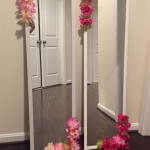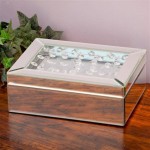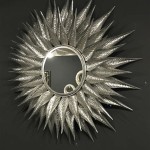How To Mirror a Broken Android Screen to a PC
Mirroring a broken Android screen to a PC can be crucial for retrieving data or continuing to use certain applications. While a physically damaged screen may hinder direct interaction with the device, several methods allow users to access the Android interface through a computer. This article outlines the most common and effective techniques.
Using USB Debugging and Scrcpy
Scrcpy is a powerful open-source command-line tool that enables screen mirroring and control of Android devices connected via USB. This method requires USB debugging to be enabled on the Android device *prior* to the screen breaking. If this precaution was taken, the following steps can be followed:
1. Download and install Scrcpy on the PC. Versions are available for Windows, macOS, and Linux. 2. Connect the broken Android device to the PC using a USB cable. 3. Open a command prompt or terminal on the PC. 4. Navigate to the Scrcpy installation directory. 5. Execute the command `scrcpy`.
Scrcpy should establish a connection and display the Android screen on the PC monitor. Mouse and keyboard inputs will be mirrored to the device.
Utilizing Vysor
Vysor is a freemium application that provides a user-friendly interface for mirroring and controlling Android devices. While a paid version offers advanced features, the free version often suffices for basic screen mirroring. Similar to Scrcpy, Vysor typically requires USB debugging to be enabled beforehand.
1. Download and install Vysor on the PC. It's available as a Chrome extension or a standalone desktop application. 2. Connect the broken Android device to the PC with a USB cable. 3. Open Vysor and select the connected device from the displayed list. 4. Authorize the connection on the Android device if prompted.
Vysor will mirror the Android screen to the PC. The application offers basic controls using the PC's mouse and keyboard.
Connecting with a Wireless Display Adapter (If Supported)
Some Android devices support wireless mirroring technologies like Miracast. If this feature was configured before the screen broke, it can be used to mirror the display to a compatible wireless display adapter connected to the PC monitor.
1. Connect the wireless display adapter to the PC monitor and power it on. 2. On the Android device (using hardware buttons if necessary), navigate to the screen mirroring or cast settings. This often resides within the display settings or quick settings menu. 3. Select the wireless display adapter from the available devices. 4. Authorize the connection if required.
This method assumes the Android device's Wi-Fi is functioning and that the device remains capable of navigating menus using hardware buttons or other input methods.
Accessing Data Through Cloud Backups
If retrieving data is the primary objective, cloud backups can be a valuable resource. Assuming regular backups were scheduled, data can be accessed through the associated cloud service.
1. Access the cloud service provider's website (e.g., Google Drive, OneDrive). 2. Log in with the Google account associated with the Android device. 3. Navigate to the backup and sync settings. 4. Locate the backups associated with the broken device. 5. Download or access the required data.
This method retrieves backed-up data but does not provide real-time access to the device's screen.
Using an OTG Cable and Mouse (For Partially Functional Screens)
If the touchscreen is unresponsive but the display still shows the interface, an OTG (On-The-Go) cable and a USB mouse can provide a degree of control.
1. Connect a USB OTG adapter to the Android device's charging port. 2. Connect a USB mouse to the OTG adapter. 3. Use the mouse to navigate the Android interface.
This solution is only viable if the screen is partially functional and displays the user interface.
Manufacturer Specific Software
Certain Android manufacturers offer dedicated software for managing and interacting with their devices from a PC. These programs often include features for screen mirroring, file transfer, and backup/restore functionality.
1. Visit the manufacturer's website and download the relevant software for the specific Android device model. 2. Install the software on the PC. 3. Connect the broken Android device to the PC. 4. Follow the manufacturer's instructions for establishing a connection and mirroring the screen.
The features and functionality offered by manufacturer-specific software vary, so consulting the manufacturer's documentation is crucial.
Third-Party Android Data Recovery Software
Several third-party data recovery tools specialize in extracting data from Android devices, even with broken screens. These applications typically require a USB connection and can recover various data types, including photos, videos, contacts, and messages.
1. Research and select a reputable Android data recovery software program. 2. Install the software on the PC. 3. Connect the broken Android device to the PC. 4. Follow the software's instructions for scanning the device and recovering data.
It is essential to exercise caution when using third-party software and choose a reputable provider to safeguard data privacy and security.

Useful Ways To Mirror Broken Screen Android Pc

How To Mirror Android Broken Screen Pc Mac Best Solution

How To Control Android With Broken Screen

How Can I Control Android With Broken Screen From Pc

How To View Broken Phone Screen On Computer

Useful Ways To Mirror Broken Screen Android Pc

How To Do Android Broken Screen Mirror Pc Flashget Cast

How To View Broken Phone Screen On Computer

How To Mirror Broken Screen Android Pc

Useful Ways To Mirror Broken Screen Android Pc








